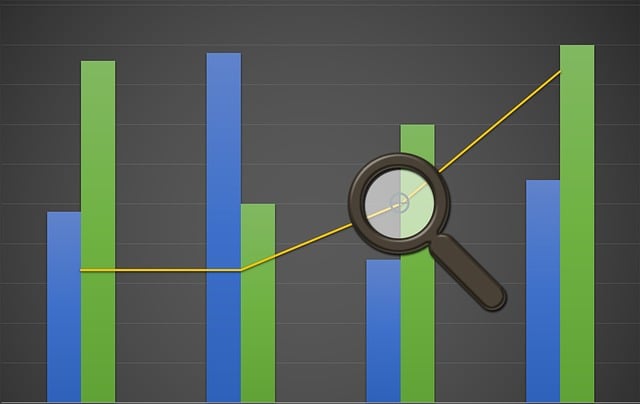¿Qué comprar? Bonos. ¿Cuándo? Ahora.
La normalización de las tasas de interés nos ha devuelto a un mundo en el que una variedad mucho mayor de escenarios puede generar rendimientos positivos para los bonos.
Introducción a la inversión de ingresos
La inversión de ingresos es una estrategia que tiene como objetivo generar un flujo constante de ingresos de las inversiones, generalmente a través de pagos de intereses o dividendos.
A menudo, este tipo de estrategia es favorecida por los inversores que priorizan el flujo de efectivo regular.
Las inversiones de ingresos incluyen una variedad de activos, como bonos, acciones que pagan dividendos, y fondos de inversión en bienes raíces (REIT). Si bien la inversión de ingresos puede ofrecer menos potencial para ganancias de capital significativas, puede proporcionar una fuente confiable de ingresos y ayudar a diversificar una cartera de inversiones.
Tipos de inversiones de ingresos
Existen tres tipos más comunes de inversiones de ingresos:
Bonos: valores de renta fija emitidos por corporaciones, gobiernos o municipios que pagan una tasa de interés predeterminada a los inversionistas.
Acciones que pagan dividendos: acciones de empresas que pagan una parte de sus ganancias a los accionistas en forma de dividendos.
Fideicomisos de inversión en bienes raíces (REIT): empresas que poseen y administran propiedades generadoras de ingresos, como edificios de oficinas, centros comerciales y complejos de apartamentos.
Oportunidades de inversión de ingresos en 2023
Tomando como guía el régimen inflacionario de la década de 1970, creemos que la renta fija puede presentar una de las mejores oportunidades para los inversores en la actualidad. Cuando las tasas de interés son súper bajas, un aumento en las tasas puede causar mucho daño a los bonos, tal como vimos en 2022, que fue el peor año para los bonos desde 1976.
Sin embargo, al observar la segunda mitad de la década de 1970, las tasas aumentaron del 5% al 10%, pero los bonos siguieron ganando dinero. Hay dos razones para esto. Primero, un aumento en las tasas de interés del 5% al 6% es mucho menos dramático que un movimiento del 1% al 2%. En segundo lugar, cuando las tasas suben, los inversores se benefician de rendimientos más altos y, de hecho, el carry ha regresado al mercado de renta fija, lo que hace que la renta corriente desempeñe un papel más importante en la rentabilidad de los bonos.
Por ejemplo, con los rendimientos actuales, los ingresos obtenidos con los bonos del Tesoro actuales a 10 años proporcionan un amortiguador de rendimiento incluso si las tasas continúan aumentando el próximo año. A medida que se aleja más de la curva de riesgo crediticio, el carry es aún mayor según los estándares históricos. Esto permite que la renta fija sea más resistente frente a una amplia gama de posibles movimientos del mercado, incluidos aquellos con rendimientos, diferenciales de crédito o volatilidad aún mayores.
Inversión de ingresos en 2023: dónde enfocarse
La conclusión es que la compensación de riesgo/recompensa de los bonos ha mejorado significativamente en 2023, y el entorno actual del mercado representa un punto de entrada muy convincente. Por supuesto, determinar la combinación correcta de bonos para una asignación estratégica más amplia dependerá del apetito de riesgo individual de cada inversor.
Para recibir más información sobre la inversión en ingresos, haga click aquí.
IMPORTANT DISCLOSURES
This is not an offer to buy or sell, or a solicitation of any offer to buy or sell any of the securities mentioned herein. The information presented does not involve the rendering of personalized investment, financial, legal, or tax advice. Certain statements contained herein may constitute projections, forecasts and other forward looking statements, which do not reflect actual results, are valid as of the date of this communication and subject to change without notice. Information provided by third party sources are believed to be reliable and have not been independently verified for accuracy or completeness and cannot be guaranteed. The information herein represents the opinion of the author(s), but not necessarily those of VanEck.
The principal risks of investing in VanEck ETFs include sector, market, economic, political, foreign currency, world event, index tracking, and non-diversification risks, as well as fluctuations in net asset value and the risks associated with investing in less developed capital markets. The Funds may loan their securities, which may subject them to additional credit and counterparty risk. ETFs that invest in high-yield securities are subject to subject to risks associated with investing in high-yield securities; which include a greater risk of loss of income and principal than funds holding higher-rated securities; concentration risk; credit risk; hedging risk; interest rate risk; and short sale risk. ETFs that invest in companies with small capitalizations are subject to elevated risks, which include, among others, greater volatility, lower trading volume and less liquidity than larger companies. Please see the prospectus of each Fund for more complete information regarding each Fund’s specific risks.
You can lose money by investing in the VanEck Emerging Markets Bond Fund. Any investment in the Fund should be part of an overall investment program, not a complete program. The Fund is subject to risks associated with its investments in below investment grade securities, credit, credit-linked notes, currency management strategies, debt securities, derivatives, emerging market securities, foreign currency transactions, foreign securities, hedging, other investment companies, Latin American issuers, management, market, non-diversification, operational, portfolio turnover, restricted securities, sectors and sovereign bond risks. Investing in foreign denominated and/or domiciled securities may involve heightened risk due to currency fluctuations, and economic and political risks, which may be enhanced in emerging markets. As the Fund may invest in securities denominated in foreign currencies and some of the income received by the Fund will be in foreign currencies, changes in currency exchange rates may negatively impact the Fund’s return. Derivatives may involve certain costs and risks such as liquidity, interest rate, and the risk that a position could not be closed when most advantageous. The Fund may also be subject to risks associated with non-investment grade securities.
There are inherent risks with fixed income investing. These risks may include interest rate, call, credit, market, inflation, government policy, liquidity, or junk bond. When interest rates rise, bond prices fall. This risk is heightened with investments in longer duration fixed-income securities and during periods when prevailing interest rates are low or negative.
There are inherent risks with equity investing. These risks include, but are not limited to stock market, manager, or investment style. Stock markets tend to move in cycles, with periods of rising prices and periods of falling prices.
An investment in a Collateralized Loan Obligation (CLO) may be subject to risks which include, among others, debt securities, LIBOR Replacement, foreign currency, foreign securities, investment focus, newly-issued securities, extended settlement, management, derivatives, cash transactions, market, operational, trading issues, and non-diversified risks. CLOs may also be subject to liquidity, interest rate, floating rate obligations, credit, call, extension, high yield securities, income, valuation, privately-issued securities, covenant lite loans, default of the underlying asset and CLO manager risks, all of which may adversely affect the value of the investment.
The yields and market values of municipal securities may be more affected by changes in tax rates and policies than similar income-bearing taxable securities. Certain investors’ incomes may be subject to the Federal Alternative Minimum Tax (AMT) and taxable gains are also possible.
Emerging Market securities are subject to greater risks than U.S. domestic investments. These additional risks may include exchange rate fluctuations and exchange controls; less publicly available information; more volatile or less liquid securities markets; and the possibility of arbitrary action by foreign governments, or political, economic or social instability.
Business Development Companies (BDC) invest in private companies and thinly traded securities of public companies, including debt instruments of such companies. Generally, little public information exists for private and thinly traded companies and there is a risk that investors may not be able to make fully informed investment decisions. Less mature and smaller private companies involve greater risk than well-established and larger publicly traded companies. Investing in debt involves risk that the issuer may default on its payments or declare bankruptcy and debt may not be rated by a credit rating agency. Many debt investments in which a BDC may invest will not be rated by a credit rating agency and will be below investment grade quality. These investments have predominantly speculative characteristics with respect to an issuer’s capacity to make payments of interest and principal. BDCs may not generate income at all times. Additionally, limitations on asset mix and leverage may prohibit the way that BDCs raise capital.
Sustainable Investing Considerations: Sustainable investing strategies aim to consider and in some instances integrate the analysis of environmental, social and governance (ESG) factors into the investment process and portfolio. Strategies across geographies and styles approach ESG analysis and incorporate the findings in a variety of ways. Incorporating ESG factors or Sustainable Investing considerations may inhibit the portfolio manager’s ability to participate in certain investment opportunities that otherwise would be consistent with its investment objective and other principal investment strategies.
ESG investing is qualitative and subjective by nature, and there is no guarantee that the factors utilized by VanEck or any judgment exercised by VanEck will reflect the opinions of any particular investor. Information regarding responsible practices is obtained through voluntary or third-party reporting, which may not be accurate or complete, and VanEck is dependent on such information to evaluate a company’s commitment to, or implementation of, responsible practices. Socially responsible norms differ by region. There is no assurance that the socially responsible investing strategy and techniques employed will be successful. An investment strategy may hold securities of issuers that are not aligned with ESG principles.
Please call 800.826.2333 or visit vaneck.com for a free prospectus and summary prospectus. An investor should consider the investment objective, risks, and charges and expenses of the investment company carefully before investing. The prospectus and summary prospectus contain this and other information about the investment company. Please read the prospectus and summary prospectus carefully before investing.
© Van Eck Securities Corporation, Distributor, a wholly owned subsidiary of Van Eck Associates Corporation.





 Por Fórmate a Fondo
Por Fórmate a Fondo